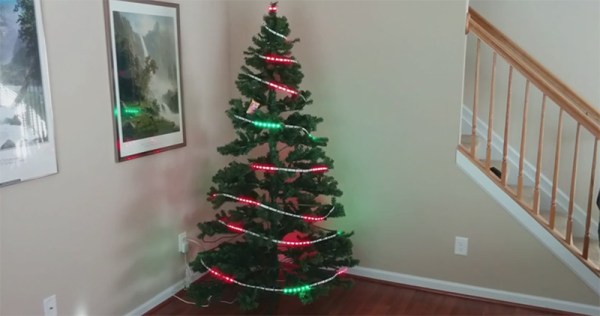Last year at the 2014 NC Maker Faire, Manical Labs brought a large LED display. Blinking LEDs and pixel animations are always welcome, but at 24 inches square this build was impressive, but it wasn’t impressive enough. This year, [Adam] at Manacal Labs wanted to go bigger. Much bigger. This build is called Colossus, and at two square meters and with 1250 individual LEDs, this LED display is a colossal build.
When building a big LED display, an enormous amount of planning pays off in dividends. The backbone of this project is a sheet of 3/8″ plywood, ripped down to 1 meter by 2 meters. 1250 half-inch holes are drilled in this sheet over four or five very long and very tedious evenings. The LEDs are installed in the thousand or so holes, and a grid of foam core board encases each individual LED.
One of the biggest problems with large arrays of LEDs is the sheer scale of it all. If one LED pixel draws 60mA, 1250 pixels means a draw of 75 Amps. This current will melt most wires, so the power is delivered over custom made copper bus bars. Driving this display with a reasonable refresh rate is another important consideration; WS2812 lights, with an 800kHz signal over one wire, is far too slow for a huge display. Instead of the 2812s, [Adam] went with LPD8806 LEDs that can be clocked at 30MHz. This is controlled with two AllPixels, effectively making this two displays acting as one. It all comes together in a very big LED display. You can check out a video of it below.














